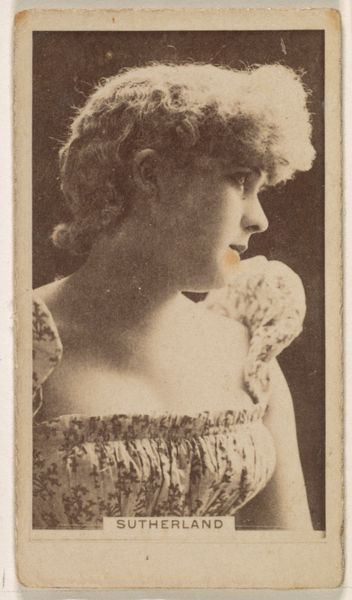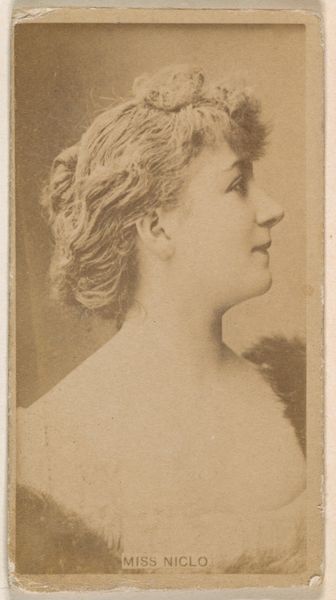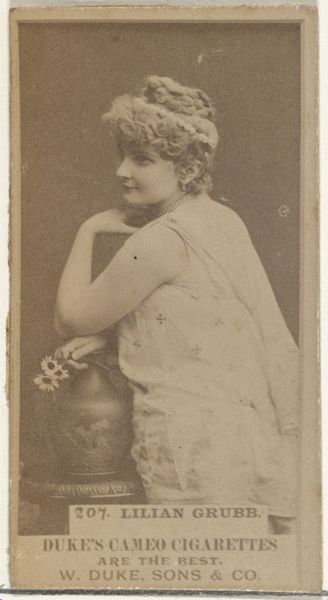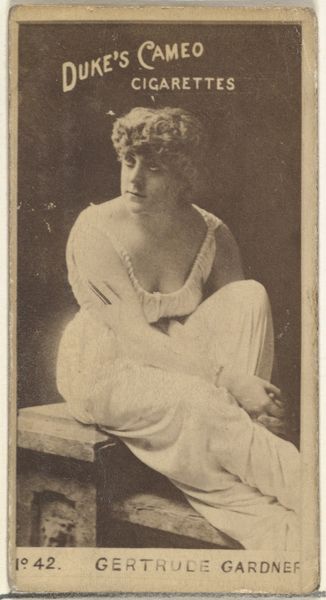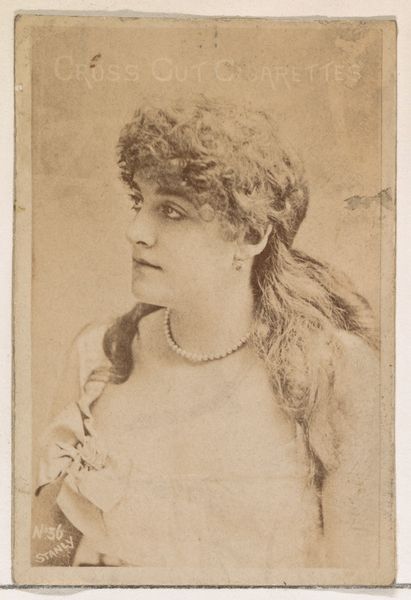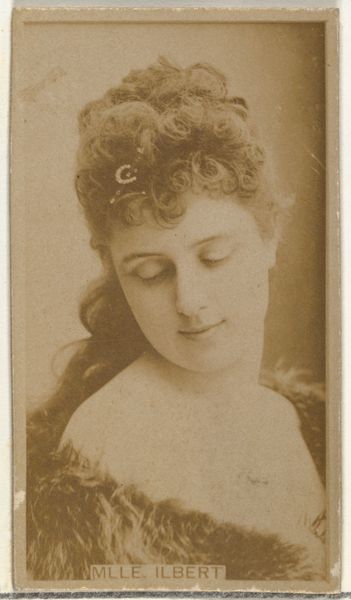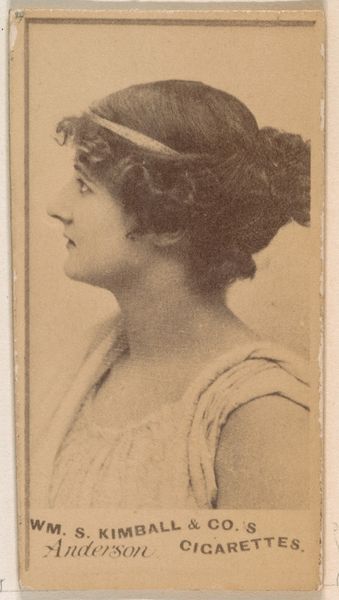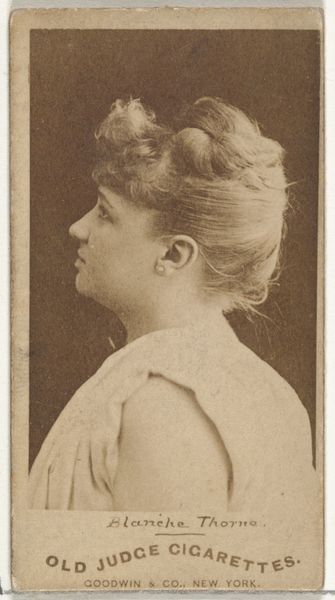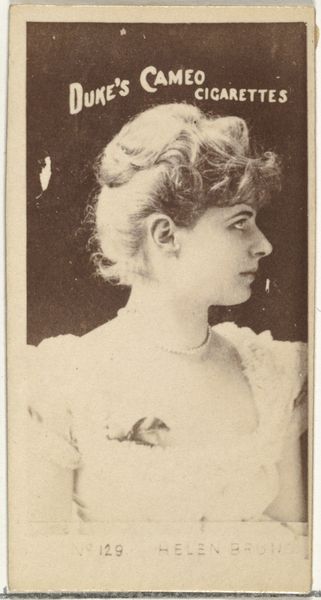
Card Number 232, Maud Granger, from the Actors and Actresses series (N145-7) issued by Duke Sons & Co. to promote Duke Cigarettes 1880s
0:00
0:00
drawing, print, photography
#
portrait
#
drawing
#
woman
#
pictorialism
# print
#
figuration
#
photography
#
19th century
Dimensions: Sheet: 2 11/16 × 1 3/8 in. (6.8 × 3.5 cm)
Copyright: Public Domain
Editor: This is a photograph from the 1880s, "Card Number 232, Maud Granger," produced by Duke Sons & Co. as a cigarette card. The texture is matte, and it's quite small. I'm immediately drawn to how she's posed. It almost seems like a classical sculpture. What do you see in this piece from a formal perspective? Curator: The composition strikes me first. Observe how the subject's downward gaze and the soft drapery create strong diagonal lines, subtly offset by the horizontal baseline established by the text. This tension is key to its aesthetic impact. Editor: I see what you mean! It's a simple composition, but the contrasting directions create visual interest. Is there more to read in that simplicity? Curator: Absolutely. Consider the interplay of light and shadow. The photograph, printed in sepia, relies heavily on tonal gradation to define form. The artist’s management of chiaroscuro sculpts the figure, lending it a sculptural quality, as you mentioned. Also, observe how her hair acts like a crown or halo due to how light illuminates it against the dark background. Editor: So the form isn't just about shape, it’s also about how light interacts with it. Curator: Precisely. The print’s textural nuances are worth further consideration, but that is for another day. Editor: Thank you; seeing how light creates depth has really changed how I look at the portrait! Curator: Indeed! There is much to learn from focusing on form itself.
Comments
No comments
Be the first to comment and join the conversation on the ultimate creative platform.
